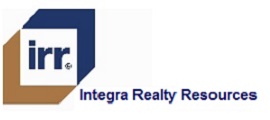Focusing on the effects of sustainability on commercial real estate, IRR San Diego reviewed leasing information to determine if green buildings, specifically LEED-certified or Energy Star, command a significantly greater rent than non-green buildings, i.e., those buildings without these certifications. Though it is difficult to quantify the impact on value for these types of properties due to limited data, the research focuses on asking rents for green buildings.
The U.S. Environmental Protection Agency provides the following definition for Green Building:
The practice of creating structures and using processes that are environmentally responsible and resource-efficient throughout a building’s life-cycle from siting to design, construction, operation, maintenance, renovation, and deconstruction. This practice expands and complements the classical building design concerns of economy, utility, durability, and comfort. Green building is also known as sustainable or high-performance building.
A green building generally has these six elements:
- Site
- Water efficiency
- Energy efficiency
- Indoor air quality
- Materials
- Operations and maintenance
Given the limited data, the findings were based on CoStar’s lease listings for existing, Class A office, specifically labeled with a LEED certification or Energy Star ration that were:
- Built after 2000
- Located in the city of San Diego, between approximately Highway 56 and Interstate 8
- Over 50,000 square feet in size
The following table summarizes the results:
| Green Building | Non-Green Building | % Difference | |
| No. of Buildings | 13 | 14 | |
| Rent Range/SF/Yr | $31.20 – $51.00 | $21.00 – $51.00 | |
| Average Rent/SF/Yr | $41.35 | $40.14 | 3% |
| Yr. Built | 2001 – 2008 | 2000 – 2008 |
Based on a review of this data, there is a minimal difference in rent between green buildings and non-green buildings – while the lower rent range for non-green buildings is less than green buildings, there is only a 3% difference from the average rent.
In terms of ownership of a green building, factors that influence the value include the actual return the investor achieves, as well as energy efficiency.
While the limited study does not show a significant rental impact for a property having LEED Certification or an Energy Star rating, it does not mean that this type of value is not recognized in the marketplace by investors and tenants. Overall, an analysis of both income and expenses for a property is necessary in determining of value of going green.
Sources:

